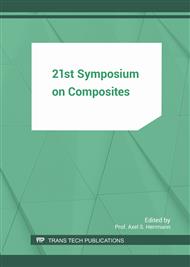p.535
p.544
p.555
p.562
p.568
p.576
p.583
p.593
p.602
Separation of Hybrid Structures for the Reclaim of their Single Components
Abstract:
The main objective for an economic and ecological use of raw materials is the achievement of closed raw material cycles. Because of that, not only the manufacturing procedures are important during the development of new materials but also the recycling processes. Within the increased use of lightweight construction in recent years, the application of multi-material or hybrid structures reach high significance for the automotive industry. In this development, especially the carbon fibre reinforced plastics (CFRP) gained its importance. However, currently there are no recycling strategies available for hybrid structures; complete recycling processes for CFRP are still expandable. This work presents methods for separation of hybrid structures made of metal and CFRP, as well as the corresponding process windows and the boundary conditions. The separation is performed by introduction of thermal heat and the behaviour of these bonded compounds is analyzed based on shear tensile tests. The results of these studies are used to develop a complete recycling process for reclamation of hybrid structures.
Info:
Periodical:
Pages:
568-575
Citation:
Online since:
July 2017
Authors:
Price:
Сopyright:
© 2017 Trans Tech Publications Ltd. All Rights Reserved
Share:
Citation:


